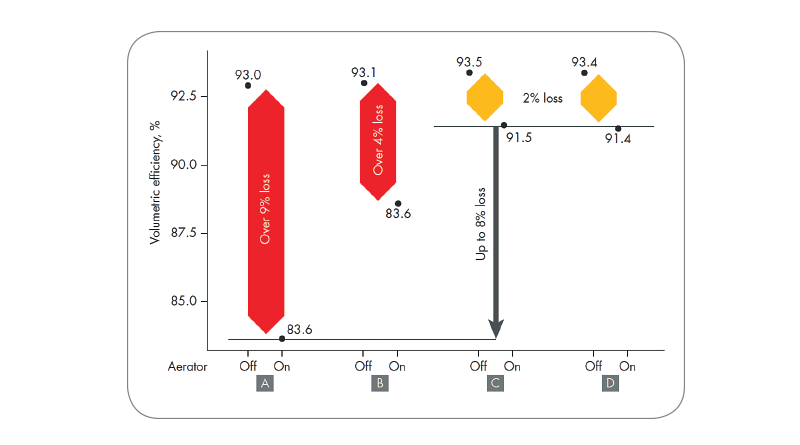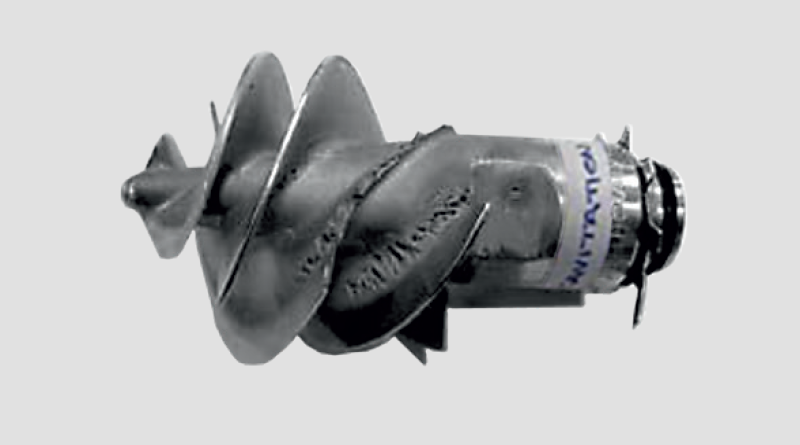Avoiding the Bubbles

Close collaboration between Trelleborg Sealing Solutions and the manufacturers of lubricants is vital. In this article, Ulf Rieper, who is OEM Manager at Shell Lubricants, discusses the development they have undertaken to avoid aeration of lubricant in compact hydraulic systems. -By ULF RIEPER, OEM Manager at Shell Lubricant
BIOGRAPHY
| Group | Air Release Time, Minutes (ASTM D3427) |
|---|---|
|
A I (mineral) |
5.03 |
|
B II (mineral) |
1.51 |
|
C III (GTL) |
0.17 |
|
D IV (PAO) |
0.17 |

Although the mechanical efficiency of the pump slightly improved when the fluid was aerated, this improvement was less than the concurrent decrease in volumetric efficiency. So, aeration reduced the overall pump efficiency. As volumetric efficiency affects hydraulic power transmission and productivity, fluids with a lower air content should improve machine performance.
The average volumetric efficiency of the pump was approximately 93% when the aerator was off. With the aerator on, this efficiency decreased by 9.4 and 4.5% for mineral-oil-based fluids I and II respectively. Both syntheticbased fluids reduced the efficiency by 2.0%, which means that these have up to and eight percent greater volumetric efficiency than mineral-based oils.

- Hydraulic fluids formulated with GTL (Group III) and PAO (Group IV) base oils display very fast air release times in the standard air release test and low levels of aeration in the dynamometer.
- Fluids formulated with Group l and Group II base oils met the standard requirements for air release time but exhibited high levels of aeration in the dynamometer.
- GTL-based fluids have significantly faster air release compared with the mineral-based oils, which means less entrained air and up to 8% greater volumetric efficiency.
- The mean sound level of the aerated Group I fluid was about 6 dB(A) greater than that of the three other fluids. This corresponds to a human perception of the noise being 50% louder.
- GTL-based fluids such as Shell Tellus S4 offer the performance advantages of PAO-based fluids but more cost-effectively.
GTL VERSUS PAO – WHICH IS BETTER?

“Trelleborg Sealing Solutions works in close collaboration with lubricant manufacturers, such as Shell. This is vitally important, because to ensure the extended life of a hydraulic system, the sealing material must be matched to the lubricant within the system.
“Shell’s recommendation to its customers to avoid any issues with aeration in compact hydraulic applications is to use a GTL-based fluid, such as Shell Tellus S4. We as a seal supplier must know which se aling materials will work best in this lubricant and have test results to back our conclusions up.
“The situation is complex when we consider the interaction of seal with lubricant. Looking at tribology, for instance, this is influenced by mating surfaces, oil (pressure medium) and the seal. We have a maximum of one third of the influence on the function of the tribology system, which is why a mutual exchange of information is imperative.
“In our latest sealing developments, Lubrication Management and Radial K, we use the seal’s interaction with pressure medium to reduce the wear on seals and mating surfaces. We can only achieve this by working hand-in-hand with lubricant suppliers.”
Holger Jordan, Director Global Technical Management for Trelleborg Sealing Solutions
